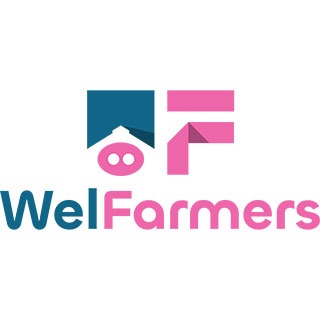Abstract: “Never Docked a Pig Tail and Never Will”
Type and Average of Pigs on the Farm
The farm houses approximately 6,400 grower-finishers.
Farming System
The production system is extensive farming.
Description and Evaluation of the Good Practice
Established in 2020, this Finnish farm was designed to meet modern animal welfare standards. Tail docking has never been practiced. The farm focuses on preventing tail biting through environmental and management improvements. Housing includes partially slatted floors, sufficient ventilation, and manipulable enrichment materials such as sawdust, wooden sticks, and rubber plates. Feeding is central to the strategy: pigs receive high-quality liquid feed (barley, wheat, peas, and concentrate) via long troughs, allowing all pigs to eat simultaneously, mimicking natural social behavior. Health management emphasizes biosecurity, with strict hygiene protocols and indoor housing to prevent disease. Tail biting is monitored twice daily, and interventions include isolating affected pigs and using special feed or tar spray. The farm reports minimal tail biting incidents and low economic losses, demonstrating the effectiveness of the practice.
Farm Context
- Environmental Enrichment
Each pen of 13 pigs includes sawdust bedding (added twice daily), a wooden stick in a holster, and a rubber plate hanging from a chain. These materials support natural behaviors and reduce stress. - Pigs
Finnish crossbred pigs are raised with 0% tail docking, maintaining full tail length. - Housing and Management Characteristics
Pens house 13 pigs with a stocking density ranging from 0.65 to 1.2 m² per pig. Flooring is a mix of solid, slatted, and drainage surfaces. Ventilation is mechanical underpressure. Lighting combines natural light with LED and night lamps. There is no outdoor access. Pigs are fed liquid feed from long troughs, and 100% can eat simultaneously. Each pen has two water nipples. - Management Practices
Males and females are separated. Health and tail biting are monitored twice daily. Bitten pigs are moved to sick pens and treated. Occasionally, biters are culled. Preventive measures ensure tail biting remains rare. - Economic Analysis
In 2024, tail biting led to minor carcass losses (approx. 750 € annually). The farm slaughtered 13,641 pigs, with only 120 showing tail damage. The practice is cost-effective and sustainable. - Environmental Analysis
Slurry (20,000 m³ annually) is used as fertilizer. Air quality is good, and ammonia emissions are reduced via targeted irrigation. No negative environmental impacts are reported. - Replicable Benefits and Relevance for Other EU Countries
This practice is scalable and adaptable across EU farms. Key requirements include improved housing, feeding systems, and biosecurity. Changes such as installing long troughs or upgrading flooring can be implemented gradually. Support from EU member states is essential to facilitate adoption and renovation for animal-friendly housing.

